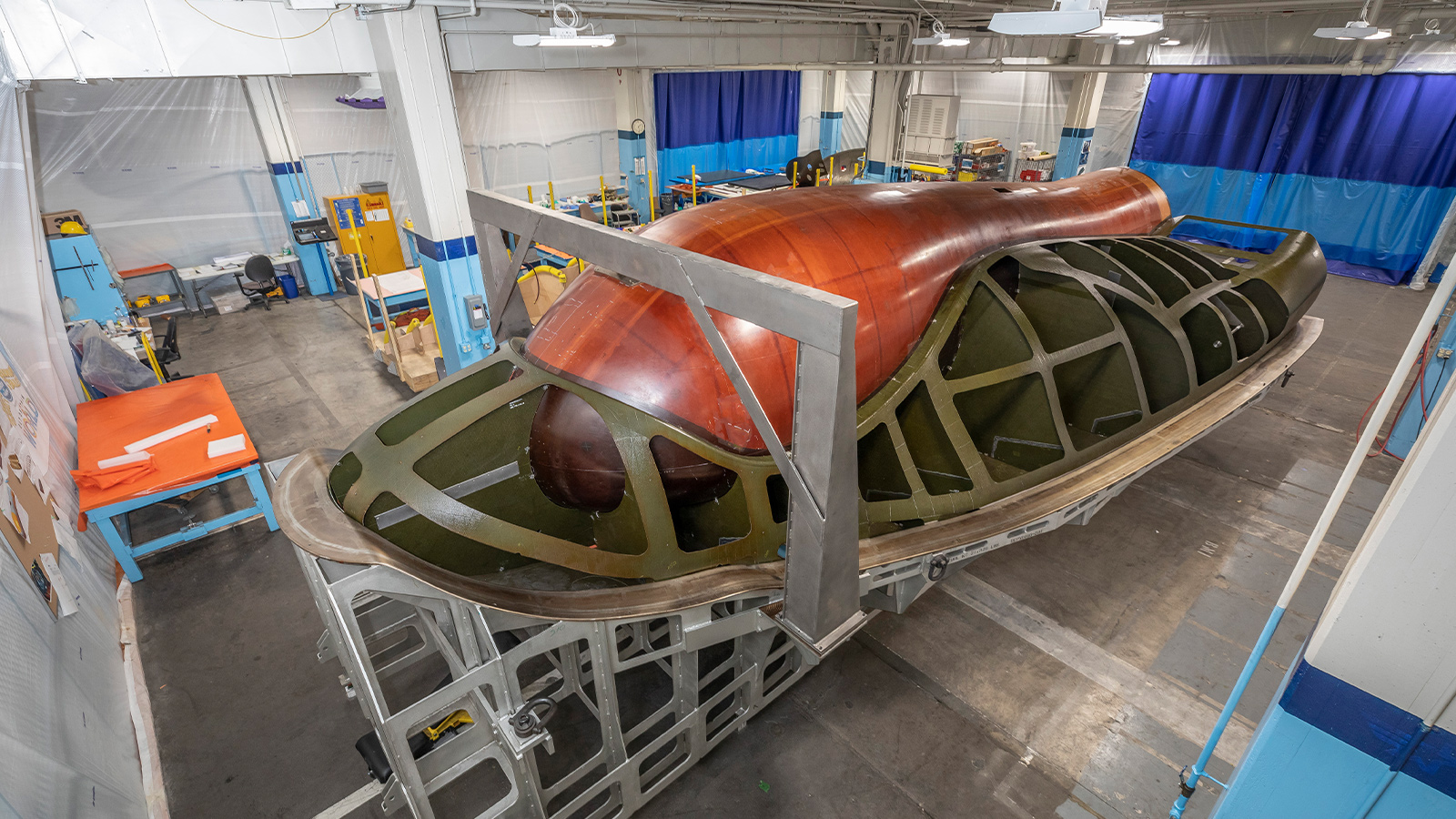Stay Up to Date
Submit your email address to receive the latest industry and Aerospace America news.
Sierra Nevada Corp. announces arrival of cargo vehicle’s primary structure for 2021 flight
LOUISVILLE, Colo. — With schedules, procedures and test plans all laid out and parts in hand, the manufacturing technicians and engineers at Sierra Nevada Corp. in Colorado just needed one more thing.
They got their wish over the weekend in the form of a molded and cured one-piece composite shell of a spaceship that arrived after a four-day road trip from Fort Worth, Texas.
Delivery of this primary structure from Lockheed Martin sets the stage for assembly of the first Dream Chaser cargo spacecraft.
Unlike other vehicles that deliver cargo to the International Space Station, this Dream Chaser and a planned second one will glide back to Earth for a soft runway landing at the same Florida facility where the space shuttle orbiters once landed.
With the primary structure displayed a few feet behind him, NASA’s Kirk Shireman, the ISS program director, alluded to this landing advantage today at a press conference held in the bay at SNC’s Space Systems headquarters where Dream Chasers will be assembled.
“This will be our largest cargo vehicle, so that capability’s good,” Shireman said, “but landing safely and softly on a runway, actually really close to our facility, is really, really important,” he added.
Sensitive experiments and specimens, such as mice, will be sent home inside the pressurized primary structure and quickly delivered to scientists. During the ride, the contents will be exposed to a modest 1.5 Gs which is “very much like an airplane,” said John Curry, a former space shuttle and ISS flight director for NASA, and now SNC’s program manager for the six contracted cargo flights between 2021and 2024.
Lockheed Martin made Dream Chaser’s composite primary structure in New Orleans and its factory in Fort Worth, curing it in the same autoclave oven facility where F-35s get baked. This process should produce a structure that’s lighter and stronger than those of the shuttle orbiters.
“Big as it is, [the primary structure] goes into the oven in one huge piece,” Curry told Aerospace America in August.
NASA is funding Dream Chaser’s development under the Commercial Resupply Services-2 program, the second round of ISS cargo contracts. SNC stands to receive $2 billion to $2.5 billion of the $14 billion budget for CRS-2, divided among SpaceX with its refurbishable Cargo Dragon capsules and Northrop Grumman with its expendable Cygnus vehicles.
“Privately, we’re investing a huge amount of money,” said SNC’s Steve Lindsey, senior vice president of space exploration systems. “We’re investing over $1 billion of our own money in this program. It really, truly is a public-private partnership.”
SNC plans to complete the assembly of the first vehicle in Colorado by April 2021. It will be flown aboard a C-5 cargo plane to Ohio for environmental testing at NASA’s Glenn Research Center, and then to the NASA Shuttle Landing Facility in Florida for runway tests.
Curry said he hopes the second Dream Chaser will be in service as soon as the first quarter of 2023 — “maybe the fourth quarter of 2022.”
About Amanda Miller
Amanda is a freelance reporter and editor based near Denver with 20 years of experience at weekly and daily publications.
Related Posts
Stay Up to Date
Submit your email address to receive the latest industry and Aerospace America news.





